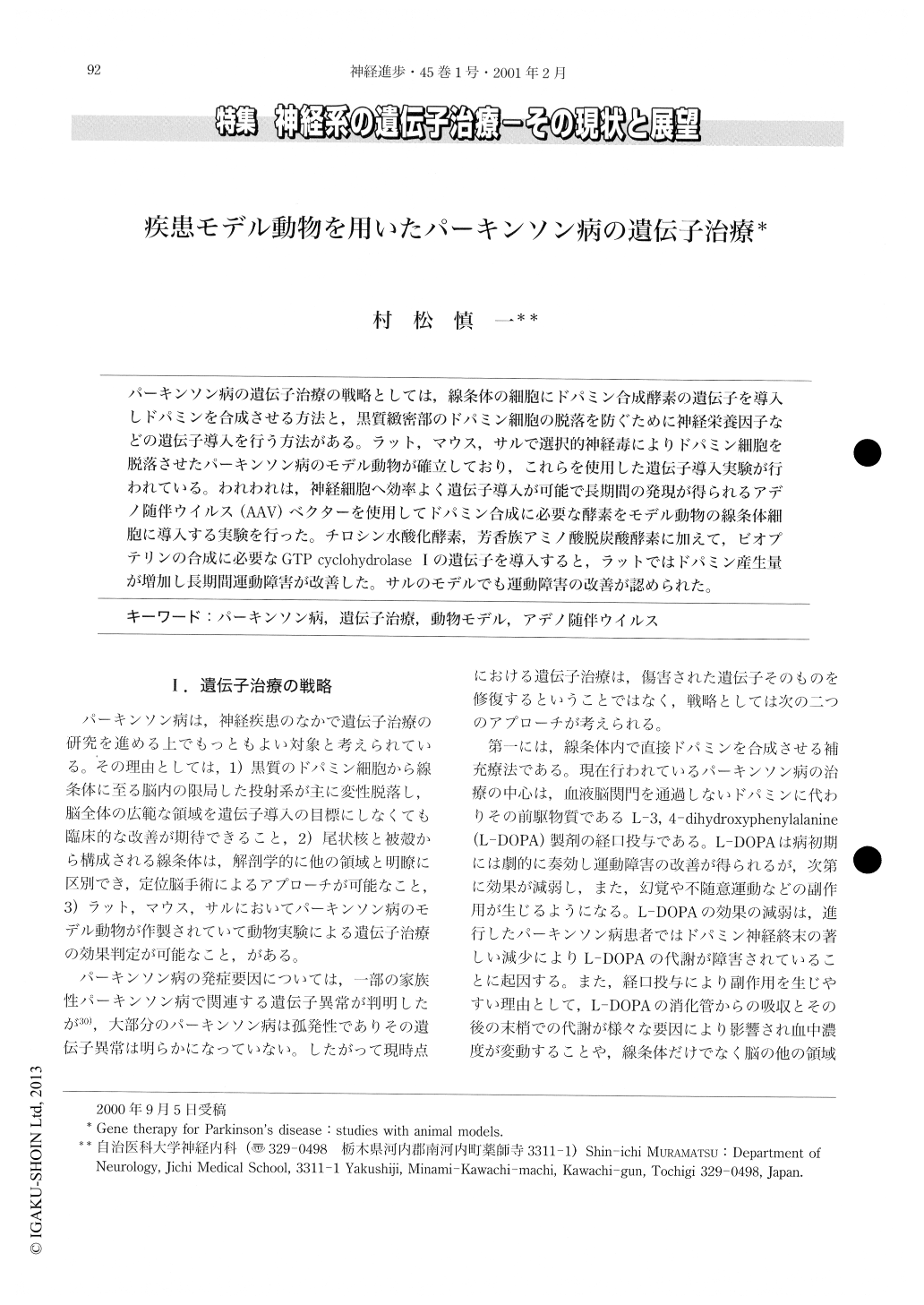Japanese
English
- 有料閲覧
- Abstract 文献概要
- 1ページ目 Look Inside
パーキンソン病の遺伝子治療の戦略としては,線条体の細胞にドパミン合成酵素の遺伝子を導入しドパミンを合成させる方法と,黒質緻密部のドパミン細胞の脱落を防ぐために神経栄養因子などの遺伝子導入を行う方法がある。ラット,マウス,サルで選択的神経毒によりドパミン細胞を脱落させたパーキンソン病のモデル動物が確立しており,これらを使用した遺伝子導入実験が行われている。われわれは,神経細胞へ効率よく遺伝子導入が可能で長期間の発現が得られるアデノ随伴ウイルス(AAV)ベクターを使用してドパミン合成に必要な酵素をモデル動物の線条体細胞に導入する実験を行った。チロシン水酸化酵素,芳香族アミノ酸脱炭酸酵素に加えて,ビオプテリンの合成に必要なGTP cyclohydrolase Iの遺伝子を導入すると,ラットではドパミン産生量が増加し長期間運動障害が改善した。サルのモデルでも運動障害の改善が認められた。
Parkinson's disease (PD), one of the major progressive neurodegenerative disorders, is due to a relatively selective degeneration of dopamine (DA) containing neurons in the substantia nigra. These dopaminergic neurons are clearly circumscribed and their main target, the striatum, is anatomically well defined and easily accessible. This fact, along with the availability of well-defined animal models, makes PD particularly suitable for studies of gene therapy approach.

Copyright © 2001, Igaku-Shoin Ltd. All rights reserved.


